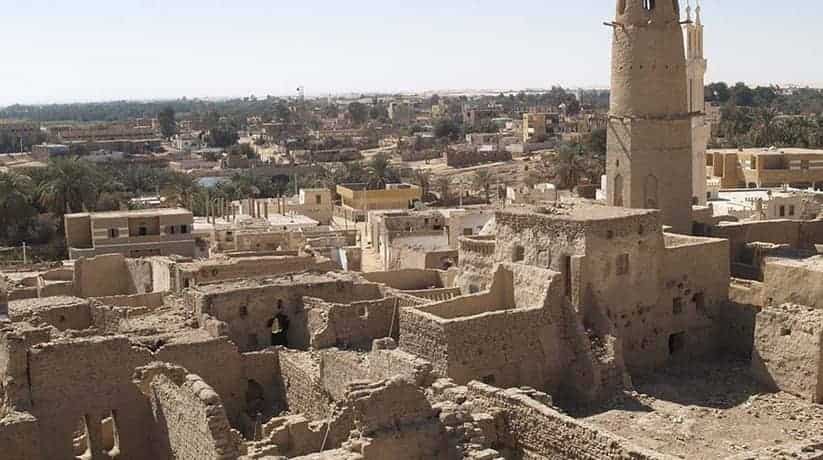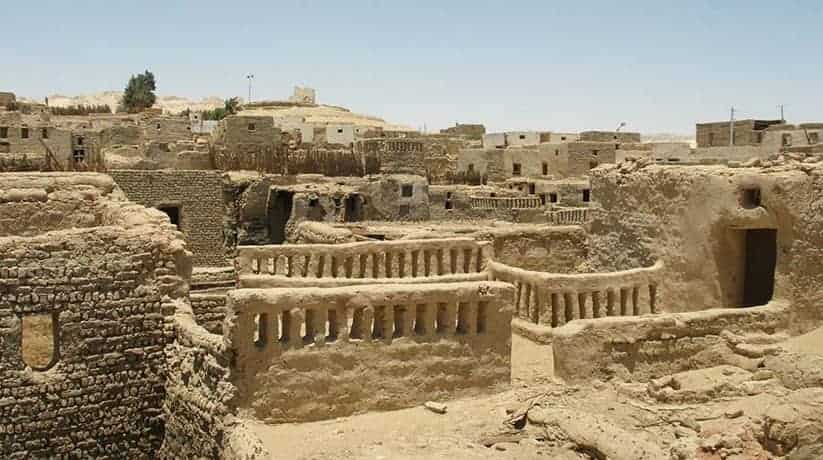Al Qasr Dakhla Oasis Egypt tours, prices, booking, reviews
Al Qasr Dakhla Oasis is an Islamic town which situated to the north-west of Mut. In fact, Al Qasr is one of the fortified Medieval Islamic towns which seen in the oases. Moreover, the site is the oldest inhabited and the best preserved settlement of its type in Dakhla. Furthermore, the site rests on the Sioh Ridge. In fact, Sioh Ridge nestled beneath the pink limestone escarpment. The escarpment marks the northern limit of the oasis. In fact, Al Qasr means in English “The Fortress”. This Islamic town founded around the end of the 12th century AC. In fact, it was by the Ayyubids over the remains of an earlier Roman Period settlement.
During this time, the fortified town was the capital of the oasis. Moreover, it constructed in a defensive position. In fact, it was against marauding invaders from the south and west. Furthermore, the Islamic town streets divided into quarters. The quarters closed off at night by barred gates. In fact, it was like the Medieval town of Mut. The narrow covered streets changed little since Medieval times. Moreover, a three-story mud brick minaret rises 21 m above the mosque of Nasr El Din. In fact, the minaret also erected during the Ayyubid Period and is one of the landmarks of the town. Moreover, the minaret is the only part which remains of the original mosque. In fact, the rest of the building destroyed and rebuilt in the 19th century. The present mosque contains the mausoleum of Sheikh Nasr El Din.
Further details about Al Qasr Dakhla Oasis:
Wooden lintels over the entrances bear inscriptions from the Quran. Moreover, there is a Madrasa (School) which attached to the mosque. In this school , they teach the scriptures to the young boys. In fact, it now renovated and still used as a school and a public meeting place. The School and the restored house of Abu Nafir are open to visitors. In fact, Abu Nafir house is tall typical of the Medieval Islamic period. Moreover, the house features heavy carved wooden door. Furthermore, the house built over remains of a Ptolemaic Period temple. In fact, the house and its door jambs depict hieroglyphs, presumably from re-used blocks. Al Qasr town features cool dark twisting alleyways as a respite from the scorching heat of the sun. In fact, these alleyways offer views of many carved beams and lintels.
The carved beams and lintels decorate the entrances to houses. The Islamic town features an old inscription which dates back to 1518 AC. In fact, this inscription located on the Beit Ibrahim. Recently discovered kilns from a pottery factory. A corn-mill shows that the Islamic town had a thriving community since antiquity. The town still has around 700 inhabitants. Many of them follow the traditions of craftsmen from a time gone by. Today the town renowned for its traditional earthenware pots and palm-leaf basketry. Yet, villagers who move out of the old town no longer allowed to return. In fact, no new building allowed there. The Ministry of Antiquities hopes to turn their deserted houses into a tourism feature.
More details about Al Qasr Dakhla Oasis:
Archaeological study and restoration took place in Al Qasr Dakhla Oasis for the past few years. In fact, it was under the auspices of Dakhla Oasis Project. The Islamic site Project directed by Professor Fred Leemhuis who was from Groningen University. In February 2006 Professor Leemhuis found proof of his theory. In fact, the theory is that a Roman fortress existed beneath the present medieval town. It was when a chance trick of the light showed up courses of Roman-sized mud bricks unseen. Archaeologists have documentation from Kellis of an unknown place named as Takastra in Greek. They can now surmise that Takastra may in fact be the Roman camp over which Al Qasr built.
















